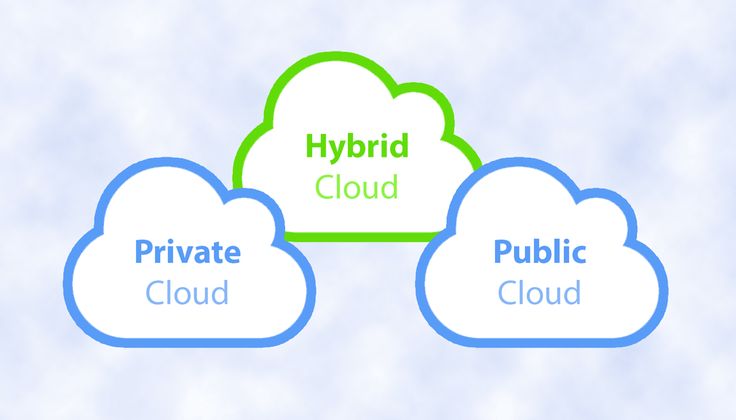In the rapidly evolving digital landscape, businesses are increasingly relying on cloud computing to enhance scalability, reduce costs, and ensure agility. However, choosing the right cloud deployment model can be challenging, as each offers distinct benefits and limitations. Understanding the differences between Public Cloud, Private Cloud, and Hybrid Cloud models is critical for organizations to make informed decisions that align with their goals.
Understanding Cloud Deployment Models
What is a Public Cloud?
A Public Cloud is a shared platform operated by third-party providers, delivering services over the internet. This model enables multiple users to access computing resources, such as storage, servers, and applications, on a pay-as-you-go basis.
- Key Features:
- Cost-effectiveness: Shared infrastructure reduces costs.
- Scalability: Resources can be scaled up or down as needed.
- Accessibility: Services are available from anywhere with an internet connection.
What is a Private Cloud?
A Private Cloud is dedicated to a single organization, offering exclusive access to infrastructure and resources. This model is typically hosted on-premises or in a private data center managed by a third party.
- Key Features:
- Enhanced Security: Resources are not shared, reducing exposure to external threats.
- Customization: Infrastructure can be tailored to meet specific organizational needs.
- Control: Greater oversight of data, compliance, and performance.
What is a Hybrid Cloud?
A Hybrid Cloud combines the benefits of both Public and Private Cloud models. It enables data and applications to move seamlessly between the two environments, offering flexibility and optimized resource utilization.
- Key Features:
- Flexibility: Allows businesses to manage workloads between private and public resources.
- Cost Efficiency: Optimize costs by using the public cloud for non-sensitive operations.
- Enhanced Functionality: Supports disaster recovery and workload balancing.
Comparing Public, Private, and Hybrid Cloud Models
1. Cost
- Public Cloud:
- Pay-as-you-go pricing is ideal for small and medium-sized businesses with limited budgets.
- Shared infrastructure lowers operational costs but may result in higher costs at scale.
- Private Cloud:
- Requires significant upfront investments for infrastructure and maintenance.
- Suitable for organizations with predictable workloads and stringent security needs.
- Hybrid Cloud:
- Offers cost optimization by leveraging public cloud resources for non-critical tasks while maintaining critical operations on private infrastructure.
2. Security
- Public Cloud:
- Managed security protocols provided by vendors.
- May not meet compliance requirements for highly regulated industries.
- Private Cloud:
- Dedicated environment ensures robust security and compliance.
- Ideal for handling sensitive data and proprietary applications.
- Hybrid Cloud:
- Balances security and accessibility by segmenting sensitive data in private environments and using public resources for less critical operations.
3. Scalability
- Public Cloud:
- Highly scalable with virtually unlimited resources.
- Suitable for dynamic workloads and rapidly growing businesses.
- Private Cloud:
- Scalability is limited by physical infrastructure.
- Requires additional investment to expand capacity.
- Hybrid Cloud:
- Combines the scalability of public resources with the control of private infrastructure.
4. Performance
- Public Cloud:
- Performance may vary due to shared resources.
- Latency can occur depending on the provider’s location.
- Private Cloud:
- Delivers consistent performance with dedicated resources.
- Ideal for mission-critical applications.
- Hybrid Cloud:
- Offers flexibility to optimize performance by choosing the most suitable environment for each workload.
5. Management
- Public Cloud:
- Managed entirely by the service provider.
- Simplifies IT management for smaller businesses.
- Private Cloud:
- Requires dedicated IT expertise to manage infrastructure.
- Provides greater control over configurations and operations.
- Hybrid Cloud:
- Involves managing both public and private environments, requiring a strategic approach and robust tools.
Use Cases for Each Cloud Model
Public Cloud Use Cases
- Startups and small businesses with limited IT budgets.
- Development and testing environments.
- Scalable solutions for seasonal demand fluctuations.
Private Cloud Use Cases
- Healthcare organizations requiring compliance with HIPAA regulations.
- Financial institutions handling sensitive customer data.
- Enterprises with proprietary applications demanding high security.
Hybrid Cloud Use Cases
- E-commerce businesses managing seasonal traffic surges.
- Companies implementing disaster recovery solutions.
- Organizations seeking to transition gradually from on-premises to cloud-based infrastructure.
Pros and Cons of Each Model
Public Cloud
Pros:
- Cost-effective.
- Easy setup and accessibility.
- Supports scalability.
Cons:
- Limited control over data and resources.
- Potential security vulnerabilities.
Private Cloud
Pros:
- High security and control.
- Customizable infrastructure.
Cons:
- Expensive to set up and maintain.
- Limited scalability.
Hybrid Cloud
Pros:
- Offers flexibility and scalability.
- Balances cost-efficiency with security.
Cons:
- Complex to manage.
- Requires integration expertise.
Choosing the Right Cloud Model
Selecting the appropriate cloud model depends on several factors, including:
- Budget:
- Evaluate upfront and operational costs for each model.
- Security Requirements:
- Assess the sensitivity of your data and regulatory compliance needs.
- Workload Type:
- Consider the nature of your workloads, such as static, dynamic, or mission-critical.
- Scalability Needs:
- Determine whether your business requires rapid scalability.
- Long-Term Goals:
- Align the choice with your organization’s strategic objectives.
The Future of Cloud Models
As technology evolves, the lines between Public Cloud, Private Cloud, and Hybrid Cloud are becoming increasingly blurred. Innovations like edge computing, artificial intelligence, and multi-cloud strategies are driving the next wave of cloud transformation.
- Multi-Cloud Strategies:
- Businesses are leveraging multiple cloud providers to optimize costs, performance, and redundancy.
- AI-Driven Management:
- AI tools are simplifying the management of hybrid environments, enabling better resource allocation and security.
- Edge Computing:
- Enhances Hybrid Cloud models by processing data closer to its source, reducing latency.
Conclusion
Understanding the unique characteristics of Public Cloud, Private Cloud, and Hybrid Cloud models is crucial for businesses to make informed decisions. Each model offers distinct advantages and is suited for specific use cases. By aligning the choice of cloud deployment with organizational needs, businesses can unlock the full potential of cloud computing, driving growth and innovation in the digital era.
In the end, whether you prioritize cost-efficiency, security, or flexibility, the right cloud model will empower your organization to thrive in an increasingly connected world. Embrace the power of Public, Private, and Hybrid Cloud solutions to future-proof your business and stay ahead of the competition.




